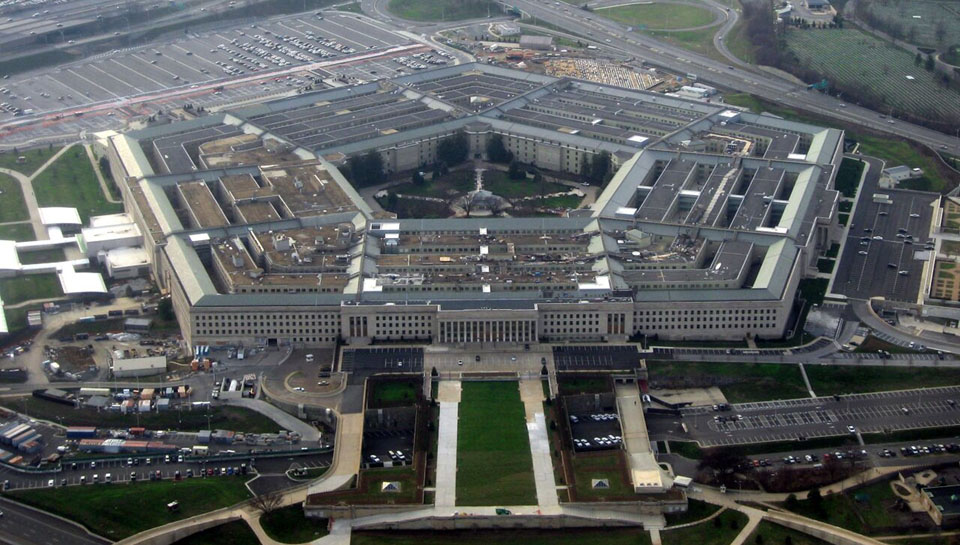Army Leaders Seek Budget Input From Beyond The Pentagon
Posted on
ASSOCIATION OF THE US ARMY HQ: Army leaders are working hard to build consensus for painful cuts to free up funding for their Big Six modernization priorities by reaching out beyond the Pentagon’s walls.
“When I was here before,” said Lt. Gen. James Pasquarette, who returned to the Pentagon last week for his fifth tour there, “the four-star commanders around the Army had no say, no input. They’re in the room now when the big decisions are made.”
Specifically, Pasquarette told reporters after an Association of the US Army breakfast, the service’s top leaders now systematically consult the four-star leaders of the four main Army Commands (ACOMS):
- Gen. Stephen Townsend at Training & Doctrine Command (TRADOC) at Fort Eustis, Virginia, which runs training centers and staff colleges;
- Gen. Robert Abrams at Forces Command (FORSCOM) at Fort Bragg, which oversees and trains Army units based in the US;
- Gen. Gustave Perna at Army Materiel Command (AMC) in Huntsville, Ala., which handles logistics and sustainment;
- and, as of last month, Gen. John Murray at Army Futures Command (AFC) in downtown Austin, Texas, which pulls together R&D, future concepts, and other elements previously scattered across the Army into a single structure focused on modernization.
Gen. Townsend, to give just one example, was commanding the counter-ISIS campaign in Iraq and Syria just last year, Pasquarette noted. Now he oversees specialized training centers for everything from infantry and tanks (Fort Benning) to military intelligence (Fort Huachuca) to helicopters (Fort Rucker).
“You don’t have that kind of experience on the Army staff,” Pasquarette said bluntly. That’s a remarkable statement coming from a man with four prior tours in the Pentagon and five years as a senior Army officer in the Pacific. As of last week, he’s the new Deputy Chief of Staff for equipment programs (G-8), traditionally one of the Army’s most powerful positions. In fact, Gen. Murray held the G-8 job until he moved to the new Futures Command, whose success is critical to the Army.
Historically, the Army’s four top leaders – the secretary, undersecretary, chief, and vice- – relied overwhelmingly on Pentagon staff like the G-8 to feed them information and options. But now, Pasquarette said, the big four inside the Pentagon are reaching out to the big four at the Army Commands beyond the Beltway.
“In fact, General (Mark) Milley (the Army Chief of Staff) and the Secretary (Mark Esper) reached out to them to ask them their thoughts as much or more in some instances than what we’re providing as the staff,” Pasquarrette said. “The four-stars have a lot of sway now when they didn’t in the past, it was all just inside the building.”
Why is this such a big deal? A little context is in order:
- Most obviously, Pasquarette is tacitly confirming the chronic complaint that HQ staffs – particularly in the Pentagon — turn inward over time and become consumed by their internal process, disconnected from the force they should be serving.
- For at least a quarter century, the Army has had a harder time than the other services getting its institutional act together. It’s struggled to get a clear vision of its future missions, a consensus plan to get there, and well-managed weapons programs to build the tools. The problem is that Anglo-American nations historically dislike large standing armies and the end of the Cold War removed the main rationale for one. But it’s also because the Army is the biggest service with the widest range of internal factions, from logisticians to special forces, and it’s hard to pull all these tribes together into a unified effort.
- Most recently, the Army has sought to unite the tribes with some radical reforms: a new vision of future warfare called Multi-Domain Operations, six priority modernization efforts to realize it, and a new organization, Army Futures Command, to lead on both equipment and ideas. “Multi-domain” has quickly become the buzzword du jour, but the prioritizing the Big Six requires cutting other programs, and creating Futures Command requires taking pieces out of AMC and TRAODC.
Hopefully, having all four ACOM commanders in rooms they were shut out of before will help give all the Army’s rival tribes a voice and shape the reform plan into something they can all support.
Yes, there’s complaining and resistance to changes like consulting the four-star commands. “I’m sure there is some friction,” Pasquarette acknowledged, “(because) military organizations are inherently conservative and I don’t mean in the political spectrum, I just mean ‘abhors change.'”
But “I think it’s the right thing to do,” Pasquarette said. “We are getting the best people to provide advice to the senior leaders… They are much more better informed about why the options are on the table and it helps them make better decisions.”
Subscribe to our newsletter
Promotions, new products and sales. Directly to your inbox.


